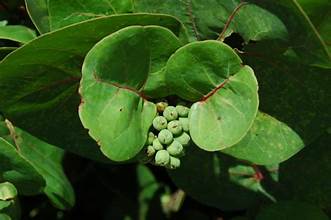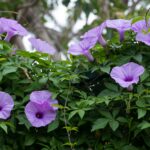
So if you’re looking for a plant that’s wind and salt tolerant and you’re living right beside the sea, Sea Grapes plant is just perfect. Then, this gorgeous shade tree and pretty plant grows well in sandy soil under salt-laden air with minimal care under correct conditions. The Sea Grape Plant is a great choice to add resiliency and beauty to your garden, making it perfect for coastal standards.
Sea Grapes overview
Coccoloba uvifera, or sea grapes, is a multi-purpose coastal plant that grows about 25′ in height and 7.6 to 9.1 meters spread. They grow well on sandy and well-drained soils in full sun to light shade. Quick growth in the USDA hardiness zones 10 through 11, hence very fit for milder coastal environments. They thrive best during spring or autumn.
What are sea grapes?
The sea grape is a small tropical tree species native to South Florida, the Caribbean, Central America, and parts of South America. This herb produces fruit the size of Ping-Pong balls that resemble grapes. The plants are widely used in landscaping alongside oceans and are native to grow in sandy soils. It can be trained to a single stem but typically grows 25-30 feet high and across with multiple stems, vase-shaped. Nearly maintenance-free after about 10 years of training, just some occasional watering and pruning. Sea grapes are valued for their attractive form as specimen plants and often used as hedges or windbreaks. They also make fine street trees along boulevards and motorways since they adapt to street conditions. Furthermore, they are suitable for bonsai.
The tree is also pretty with broadly leathery, evergreen leaves of about 8 to 12 inches long, measuring 20 to 31 cm. Young leaves, reddish-bronze; when it matures to dark green, it has red veins. This produces clusters of ivory to white flowers that bloom on short stalks. The fruit matures to a deep purple but still grows in clusters. Other ornaments include the smooth bark, which breaks off in sections and has a flecked pattern of brown, white, and grey.
What Does Seaside Grapes Taste Like?
These sea grapes are edible and taste rather sweet and slightly sour, like apples, but they aren’t related to the real grapes. While they are more classically used in making wine, vinegar, and jelly, they can be taken fresh as well. And watch out for their huge, hard seeds. Both male and female plants must be present in order to produce the fruit. Remember, this tree is a messy fruit dropper and litterbug, plus some people develop very serious allergies to its pollen.
How to grow sea grapes?
Growing a sea grape tree in your garden or yard has a number of positive aspects to it. The ability of this tree to endure sandy soil, brackish water, and salty air makes it perfect for shorelines and coastal estates. Sea grapes are salt-tolerant but thrive in fertile, well-draining soil and in full sun. The younger the plant, the more sensitive to cold it will be, and won’t survive, but mature plants can tolerate temperatures down to as low as 22 degrees Fahrenheit (-5 C).
Sea Grapes Propagation
Yes, sea grapes do reproduce by seeds naturally, but this won’t give you much control over the sex or characteristics of the tree. Take a cutting from a mature plant for more predictable results. Otherwise, you can have a much bigger tree in a short time by purchasing a nursery tree. This may not seem significant, but the regular watering of the tree shall make it produce deep roots even while it is still small in size. Whereupon it is established, the tree probably won’t need to be watered again.
Pruning of sea grapes
Trimming the tree is recommended as it grows, even though it is not necessary for the health of the plant. If you want the sea grape tree to have a particular shape, start pruning it early and give it annual care as it grows. The large leaves of sea grapes make hand pruning the best method; shearing or cutting them will not produce acceptable results.
Problems related to sea grapes
Sea grape trees generally have few issues with diseases, but they are troubled by two pests: tiny psyllids and sea grape borers. Psyllids tunnel into limbs, causing nipple gall on the leaves. Regular pruning, mulching leaves, and supplemental watering or irrigation help control these pests. Introduce beneficial insects or apply neem oil or insecticidal soap on a weekly basis, or both, to easily control nipple gall. All in all, sea grapes are a utilitarian, attractive element of coastal landscapes, offering interest and beauty throughout every season.



“Waah, sea grapes ke bare mein itna kuch seekhne ko mila, bilkul fascinating hai! Inka culinary use aur ecological importance jaan kar aur bhi interesting lagne laga. Nature lovers ke liye toh yeh ek must-read article hai! 🌊🍇 #SeaGrapes #MarineDelicacy #Foodies #NatureLovers”